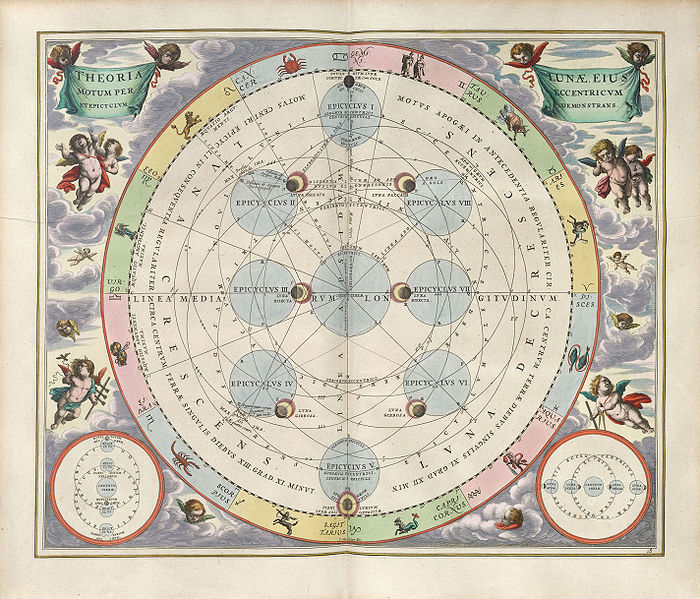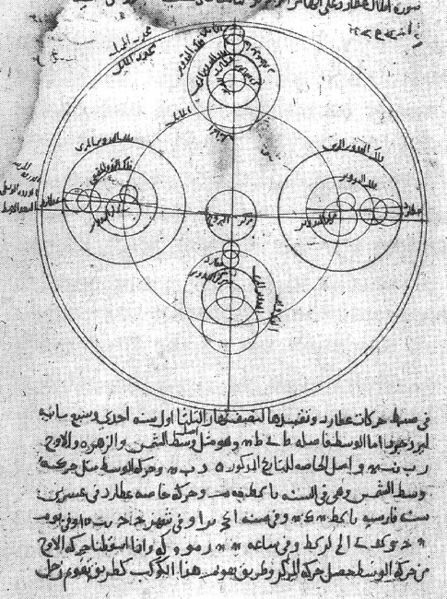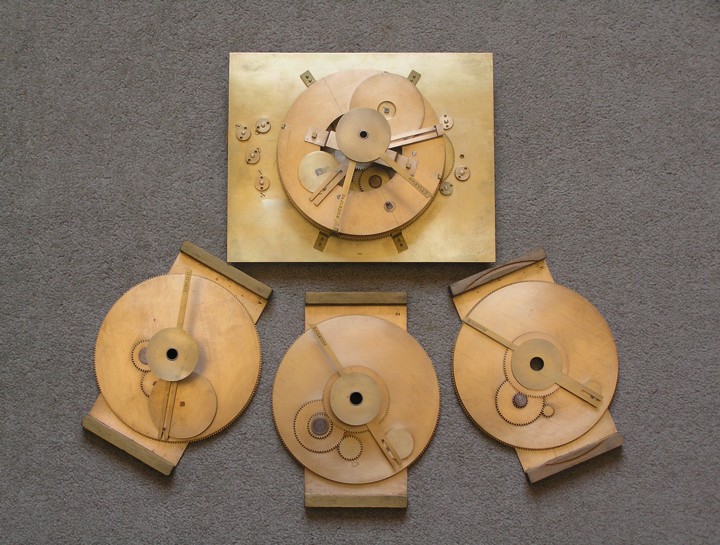
The Antikythera mechanism is by far the most sophisticated piece of technology that survives from the ancient world. This corroded mass of battered bronze gearwheels languished at the bottom of the sea for more than 2000 years, before being salvaged by sponge divers in 1901.
The device was originally a mechanical computer (some people prefer to say calculator), which used Greek astronomers' state-of-the-art theories to model the movements of the Sun, Moon and planets in the sky.
Well that's what scholars thought, anyway. But a new paper on the mechanism, published earlier this year in the Journal of the History of Astronomy, suggests that they might have got things back to front. Jim Evans, an expert in the history of astronomy based at the University of Puget Sound in Tacoma, Washington, and his colleagues Alan Thorndike and Christian Carman have made the most accurate measurements yet of the Antikythera mechanism's zodiac dial, used to display the positions of celestial bodies in the sky.
Evans described his work at an event held in March at the Getty Villa in Los Angeles, at which he and I discussed the Antikythera mechanism (see video). His analysis has various technical implications for the way that the device displayed information - to be honest when I first heard him speak I thought it was the kind of thing that only true Antikythera geeks would get excited by. But when I went through the paper in more detail I saw this knock-out sentence, right at the end:
"Finally, if the maker of the Antikythera mechanism used gears to model Babylonian astronomical cycles, and if, as is likely, the mechanism reflects a craft tradition going back to the time of Archimedes, this raises the fascinating, but unprovable, possibility that epicycles and deferents entered Greek astronomy, not because of natural philosophical considerations, but because some geometer applied a geometrical image of gearing to a cosmic problem."
 The theory of epicycles - the idea that celestial bodies moved in small circles as they traced larger orbits around the Earth - is arguably the most famous aspect of Greek astronomy. Although often scoffed at, it was actually very good at explaining the apparent movements of the Sun, Moon and planets through the sky, and it pretty much defined our view of the cosmos (see top three pics for various examples) until Kepler came up with the idea of elliptical orbits in the early 17th century AD.
The theory of epicycles - the idea that celestial bodies moved in small circles as they traced larger orbits around the Earth - is arguably the most famous aspect of Greek astronomy. Although often scoffed at, it was actually very good at explaining the apparent movements of the Sun, Moon and planets through the sky, and it pretty much defined our view of the cosmos (see top three pics for various examples) until Kepler came up with the idea of elliptical orbits in the early 17th century AD.
What Evans and his colleagues are suggesting is that geared devices like the Antikythera mechanism didn't model this theory after all. They inspired it.
That's huge. It would give mechanical models a starring role in the history of astronomy, in other words in the way that we have come to understand the universe around us. If Evans is right then without models like the Antikythera mechanism, there would have been no epicycles, and for 2000 years we would not have seen the cosmos in the way that we did. Our modern understanding of how the solar system works would presumably still be the same, but the history of how we reached this point would be dramatically different.
I've written a feature about this latest work in this week's edition of Nature. But here's a summary of what led Evans and his colleagues to suggest this idea.
First, a bit of background about epicycles. The Greeks generally thought that the celestial bodies in the solar system - the Sun, Moon and five known planets - were orbiting Earth. They saw these celestial bodies as divine, and believed that their orbits must therefore consist of perfect circles.
 But this isn't what you see when you look at the sky. The Sun and Moon (because the orbits of the Earth and Moon are actually ellipses, not circles) appear to speed up and slow down. And the planets (because they're orbiting the Sun, not the Earth) have a rather inconvenient habit of changing direction.
But this isn't what you see when you look at the sky. The Sun and Moon (because the orbits of the Earth and Moon are actually ellipses, not circles) appear to speed up and slow down. And the planets (because they're orbiting the Sun, not the Earth) have a rather inconvenient habit of changing direction.
To explain this, the Greeks came up with the idea that celestial orbits were made up of different circles superimposed on one another. For example they reckoned that each planet traced a small circle - an epicycle - at the same time as moving around its larger orbit - the deferent. Similar theories of the Sun and Moon's motion involved superimposing one circle onto another with a slightly different centre.
When researchers who had X-rayed the surviving pieces of the Antikythera device published a reconstruction of its workings in 2006, they noted a crucial piece of gearing that was used to drive the Moon pointer. A "pin-and-slot" mechanism allowed one gearwheel to drive another around a slightly different centre, giving an undulating variation in speed. This pin-and-slot mechanism was itself mounted on a bigger 9-year turntable, effectively modelling how the orientation of the Moon's ellipse rotates around Earth.
This seemed to be a lovely demonstration of an epicyclic lunar theory used by the Greeks, translated into wheels of bronze. This type of gearing, in which gear wheels ride round on other wheels, is still described as epicyclic.
 Although the relevant gearing for the Sun and planets does not survive, researchers assumed that if the mechanism was using epicyclic gearing to model the motion of the Moon, it was probably doing the same thing for these other bodies too. The photo on the left shows the epicyclic gearing that models the motions of the planets in a reconstruction made by Michael Wright (see how it works in this video).
Although the relevant gearing for the Sun and planets does not survive, researchers assumed that if the mechanism was using epicyclic gearing to model the motion of the Moon, it was probably doing the same thing for these other bodies too. The photo on the left shows the epicyclic gearing that models the motions of the planets in a reconstruction made by Michael Wright (see how it works in this video).
So here's the new bit. Evans has now shown that the Antikythera mechanism may not have worked this way after all. He used X-ray images to accurately measure the divisions on the device's main dial. This dial has two concentric scales, one showing the 360 degrees of the zodiac, and one showing the 365 days of the year, so that pointers moving around it can show both the date, and the position of celestial bodies in the sky.
Just less than a quarter of this dial survives. The 360 zodiac divisions should of course be very slightly wider than the 365 day divisions. But Evans found that although evenly spaced, the zodiac divisions in this surviving portion are actually closer together. To make a full circle, other parts of the zodiac scale must compensate by being extra widely spaced.
This was done on purpose, Evans believes, to model the uneven progress of the Sun through the sky. Instead of the Sun pointer moving at varying speed around an equally divided dial, it moved at constant rate around an unequally divided dial.
Evans' analysis suggests that half of the zodiac dial had extra-narrow divisions - a "fast zone" - and half had extra-wide divisions - a "slow zone". This scheme would have modelled the Sun's motion reasonably accurately and is identical to an arithmetic theory that Babylonian astronomers used for the Sun, known as System A. The Greeks borrowed other Babylonian astronomical theories, so it's not a huge stretch to think that they used this one too.
If Evans is right (and others in the field are taking his suggestion seriously) then the Antikythera mechanism did not use epicyclic gearing to model the movement of the Sun after all. It used conventional geartrains to model much older astronomical theories.
This may therefore be the case for the planets too. Evans thinks that they were shown on five individual dials, perhaps showing the timings of events in their cycles rather than their position in the sky - again, no epicycles required.
As discussed above, the Antikythera mechanism did use epicyclic gearing to model the varying motion of the Moon. But Evans points out that the amplitude of variation encoded in the pin-and-slot mechanism is closer to that used in older arithmetic theories than in the epicyclic theory used by the Greeks.
He believes that rather than modelling epicycles directly, a mechanic looking for a way to represent an older, arithmetic theory of the Moon's motion may have hit upon the idea of using gearwheels mounted on other wheels to produce the cyclic variation that he was after. In other words the inventor of epicycles was not an astronomer, but a mechanic.
Once astronomers realised that epicyclic gearing could closely model what was going on in the sky, they could have borrowed the idea of superimposed circles, and incorporated it into their own theories of how the cosmos was actually arranged. The clockwork universe was born.
Not much is known about when and how the idea of epicycles first arose, but the credit is traditionally given to an astronomer called Apollonius of Perga who lived in the third century BC. Geared astronomical devices seem to have arisen at around the same time - although the Antikythera mechanism itself dates from the second or first century BC, the Roman author Cicero wrote that Archimedes made one in the third century BC. So the timing is about right for such machines to have inspired the idea of epicycles.
Over the following centuries, there could have been an ongoing interaction between mechanics and astronomers as the theory was developed and refined. "Maybe we need to rethink the connection between mechanics and astronomy," says Evans. "People think of it as purely one way, but maybe there was more of an interplay."
If this had happened, wouldn't somebody have written about it somewhere? Not necessarily, says Evans. He points out that the history of astronomy has generally been written by philosophers, who would have downplayed the role of mechanics.
Greek astronomy, he says, combined "a low road of nitty gritty arithmetical calculations", with "a philosophically-oriented high road" that was based on aesthetically pleasing geometric theories. "The people who wrote the history were philosophers of the high road. If there were the influence of something mechanical, it's not surprising that it wouldn't be there in the history. The historians emphasised the clean, the pure, the philosophical."
As Evans admits, it is impossible to prove where the idea of epicycles came from. But his analysis is fascinating food for thought. And a reminder, if we needed one, not to take anything about the Antikythera mechanism for granted.